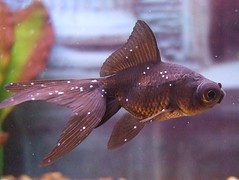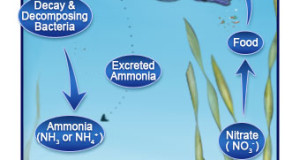 In Part 1 of our blog “Understanding Active Ingredients in Antibacterial Fish Medications“, we discussed active ingredients primarily used to treat bacterial infections. Next in this series is anti-parasitic medications. These ingredients are used to treat for different types of parasites.
In Part 1 of our blog “Understanding Active Ingredients in Antibacterial Fish Medications“, we discussed active ingredients primarily used to treat bacterial infections. Next in this series is anti-parasitic medications. These ingredients are used to treat for different types of parasites.
Parasitic infections or infestations in aquariums can be internal (inside the fish or invertebrate) or external (on the outside of the animal, on tank surfaces or in the substrate), as well as microscopic or large enough to see with the naked eye. Use caution with these medications as most may also destroy sensitive fish and invertebrates.
Copper:
Copper has long been one of the “go to” medications for parasite treatment in aquariums, especially for treatment of “Ich”, and protozoan parasites. Copper sulfate is the most common form in most copper-based medications but chelated copper treatments are also available as a potentially safer alternative. Copper-based medications are usually used to treat parasites and even some algae outbreaks, but since it is a heavy metal, it can be very dangerous to invertebrates and some fish. Monitoring Copper levels during treatment is extremely important, to maintain effective levels, and to prevent disastrous overdoses. Even after treatment is over and most of the copper has been removed using carbon or another filter media, residual copper can be left behind in the aquarium.
Fenbendazole:
Fenbendazole is the active ingredient in many dewormers. It is used most commonly to treat mammals including cattle, sheep, and other livestock but is also used less commonly for reptiles, amphibians and fish. It is effective against internal parasites like roundworms, tapeworms, hookworms and others but for aquarium purposes, it is usually used to eliminate planaria (a type of flatworm), calamus worms (an internal parasitic worm) and hydra (related to corals and anemones, usually seen on the glass or rocks). This is regarded as a very strong medication but is one of the few considered reliable for these parasites.
 Garlic (Allium sativum):
Garlic (Allium sativum):
While not an actual “medication”, I include garlic because it is a very popular nutritional supplement that has been proven to be helpful in recovery and treatment for some diseases. It is an appetite stimulant in many fish and can help encourage even finicky eaters to feed. Garlic is also a power antioxidant that has been shown to improve a fish’s own immune system and help them fight off a condition on their own. Some believe that the garlic may “taste” bad to the parasite and cause them to fall off of the fish, but it is more likely that the fish is able to fight the parasites off on its own because of the extra nutritional boost it receives. Although garlic extract from any health food store can be used in aquariums, formulas manufactured specifically for aquarium use are generally best and often also contain Vitamin C or other vitamins and minerals. At any rate, this homeopathic herbal additive is not a true medication, has no measurable side effects, and is beneficial as a supplement for most freshwater or saltwater fish.
Iodine:
Iodine is often used as a supplement in reef aquariums to benefit some corals – primarily soft corals – as well as aid in the molting of crustaceans (for more information, see this blog entry). However, it is also the active ingredient in some medications and disease treatments, mostly for corals. As a dip, it kills off nuisance inverts like flatworms and can help sterilize wounds.
Potassium Permanganate:
Potassium Permanganate is another colorful medication that can be very effective against external parasites when used properly – and very harmful if used wrong. The color of this ingredient when “active” and working is a deep purple. Over time, it turns yellowish-brown as it oxidizes, essentially “rusting” in the aquarium. The concentration of the medication must be monitored to make sure that the medication is remaining “active” long enough to treat the parasites it is targeting. Potassium Permanganate is effective against larger parasites like flukes, lice and anchor worms and can be used to treat the entire aquarium or, preferably, as a dip or bath. As a strong oxidizer, Potassium Permanganate should be used and stored with care and contact should be avoided since it will stain skin and clothes.
 Praziquantel:
Praziquantel:
Praziquantel is a powerful de-wormer used to treat flukes, tapeworms and anchor worms. It is considered safe for fish, invertebrates, plants or biological filtration and is popular for use in ponds. It usually does not require a water change after treatment. This is also the active ingredient in many de-worming treatments for dogs and cats.
Next week I’ll finish up by discussing medications that are multipurpose medications. Let me know in the comments if you have any questions about using fish medications and I’ll be sure to respond as fast as I can.
 That Fish Blog – Aquarium Advice and Information
That Fish Blog – Aquarium Advice and Information


Thank you. This is extremely informative and easy to understand. There is little reliable information to be found on fish diseases that isn’t mostly anecdotal. I have bookmarked this and hope I never have to reference it!